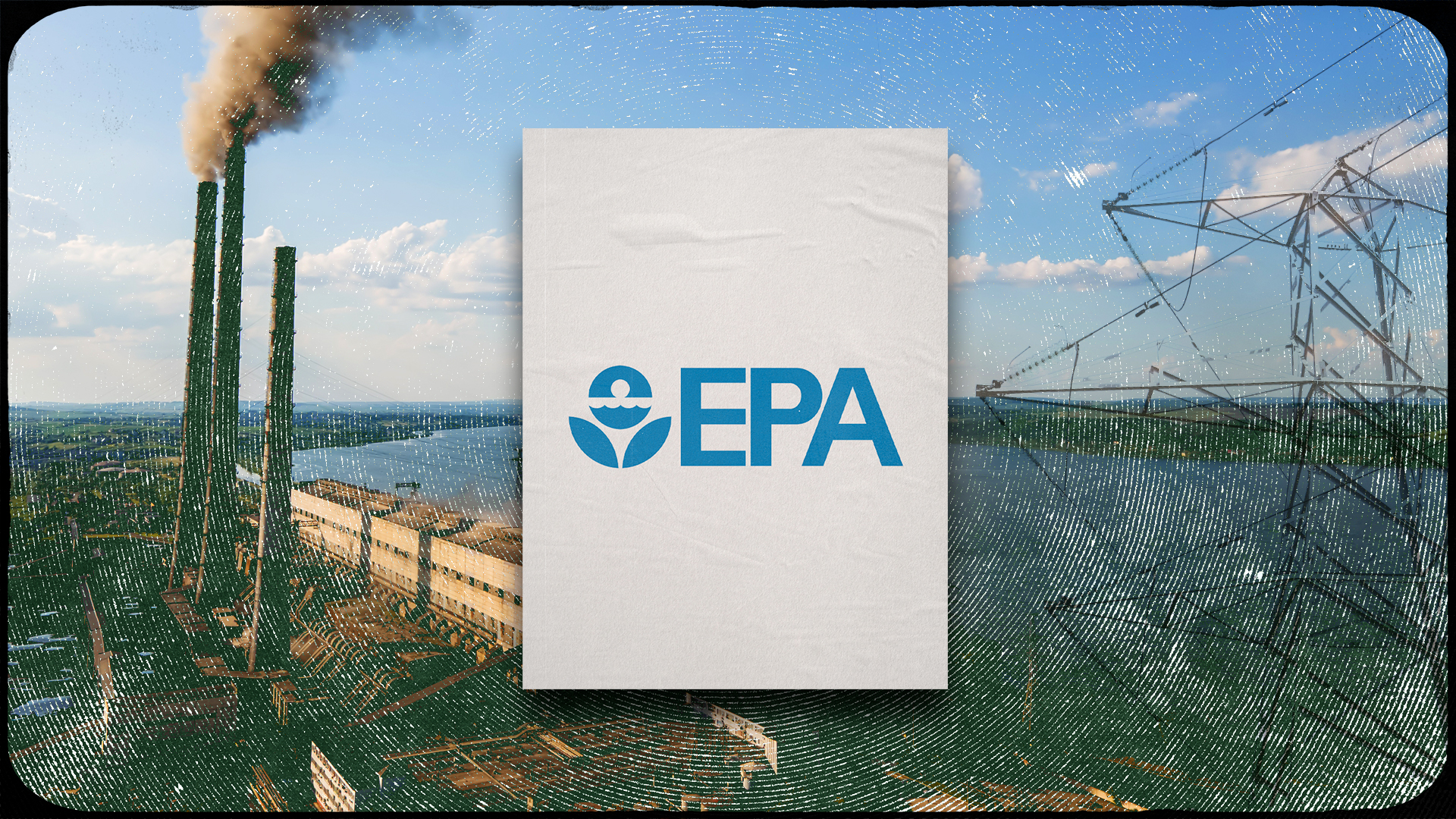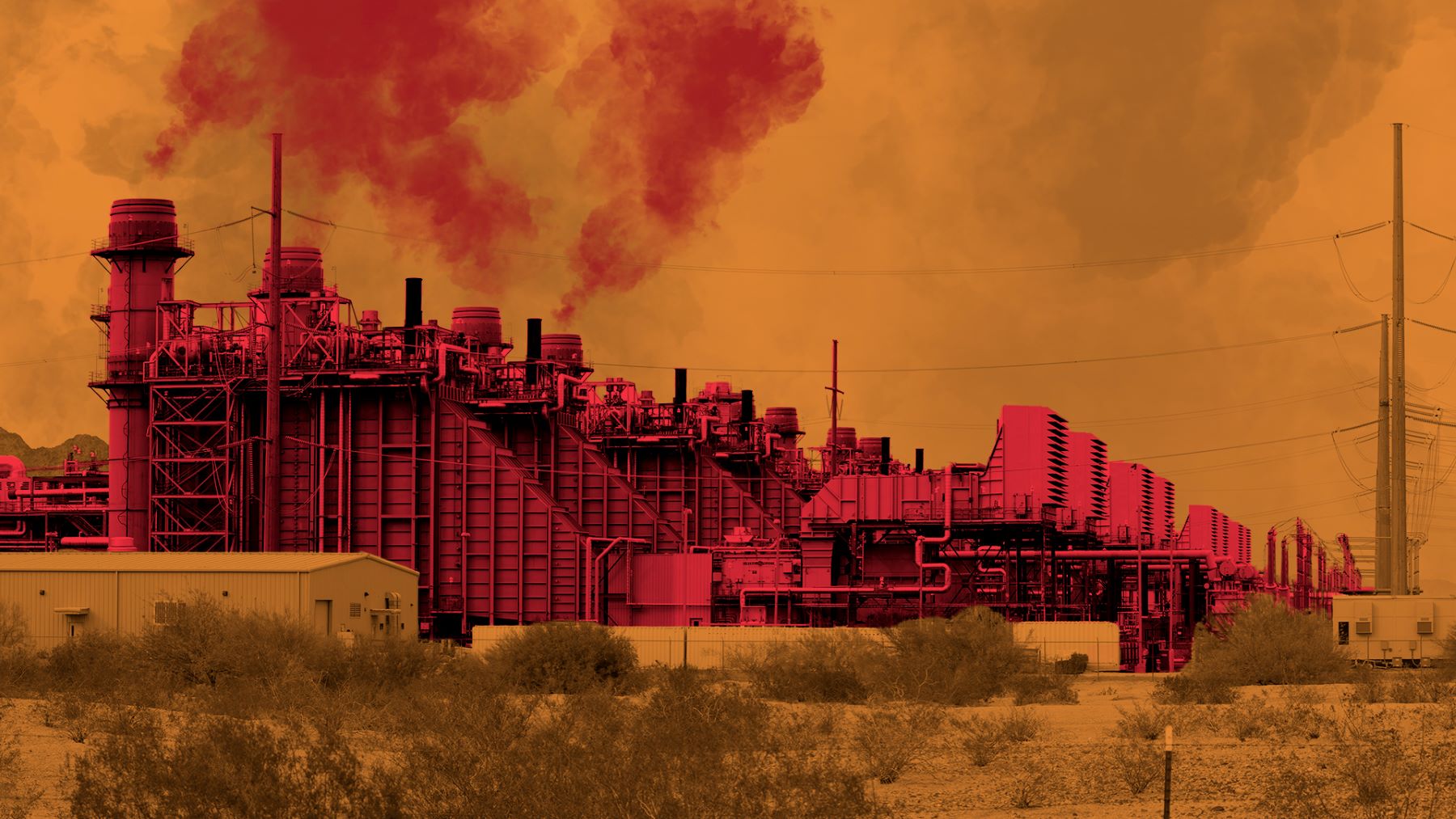This Wednesday, the U.S. Supreme Court rejected requests to pause carbon pollution rules for coal and gas plants set by the Environmental Protection Agency (EPA) earlier this year. These rules require many coal and gas plants to cut their carbon pollution 90 percent by 2032. By allowing these regulations to go into effect while they are challenged in lower court, the Supreme Court took a rare break from its attacks on the environment. Even a broken clock is right twice a day.
Coal and gas plants produce one-quarter of all climate pollution in the U.S., so this is a huge deal. This decision is the starting gun in the race to cutting pollution from coal and proposed gas plants. States now take the lead, as they are ultimately responsible for implementing these rules in ways that work for their economies and communities. The good news is that affordable clean energy means that states can comply with these rules in ways that create jobs, cut community air pollution, and ensure a competitive edge in a growing economy.
Here’s what this decision means and what needs to happen next.
What Does This Supreme Court Decision Mean?
This decision means these vital rules will go into effect, despite ongoing legal challenges from right-wing interests and the fossil fuel lobby. This is a major win for all of us. After more than a decade of legal back and forth, a path is finally visible to clean up the fossil power plant pollution that has, for so long, burdened communities nationwide.
The EPA rules for existing coal plants and new gas plants are projected to curb over 1.4 billion metric tons of carbon pollution, with massive economic benefits from reduced climate change and improved public health–quantified at $270 billion and $120 billion, respectively. Big polluters fought tooth and nail against ever cleaning up this pollution, blocking an earlier Obama-era rule, and seeking to block these rules, too, before planning could even begin. They’ve now lost. These are the first-ever federal standards to go into effect for one of the largest sources of climate pollution in the country.
To be clear, utilities, fossil fuel companies, and red states are still challenging these rules in lower court. But the Supreme Court has denied their emergency request to pause the rules pending legal challenge, and the majority of the Court indicated no qualms with the rules. A broad coalition of states, advocates, and companies stood up to defend the rules—from forward-looking utilities to a broad spectrum of 21 states (including, notably, Pennsylvania, Michigan, North Carolina, and Arizona) to public health and energy experts.
Only three justices out of eight expressed opposition to the regulations, with Justice Alito recusing himself. Though the Court remains a present danger to basic protections for Americans and in urgent need of reform, EPA’s rules stood up to even its unfair scrutiny. Cases like this one should never be in doubt, as they are based firmly on EPA’s authority under the Clean Air Act. This decision is a positive signal on the rules’ long-term legal durability.
What Needs To Happen Next?
This decision is a big deal—but it’s just the starting gun. Now, states and utilities must get moving to implement these rules on time.
Under the existing coal rule, states now must submit state plans for compliance by June 2026. Utilities and companies planning new gas plants must comply with the new gas rule immediately. Each of these rules requires a 90 percent reduction in carbon pollution from covered plants by 2032. It’s time to get to work.
What Do States Need To Do To Comply?
States have less than two years now to set plans for their coal fleet. These coal plants have long been expensive and dirty; now, states need to take a hard look at their future. Many have already retired as non-economic and many more will soon. This is a great time to plan for a better future, and now the EPA rules provide a frame to do so: State environmental agencies are ultimately responsible for implementing the rule for existing coal plants, and they are required to submit plans to EPA on how they will comply by June 2026.
The coal rule requires states to ensure their coal plants reduce their carbon pollution 90 percent by 2032, unless the plant commits to retire fully before then. Plants retiring between 2032 and 2038 must reduce their carbon pollution equivalent to co-firing with 40 percent natural gas.
Let’s be clear: States are experts at improving their energy system and economies, and these new standards play to those creative strengths. Though the rules set their emissions targets based on feasible reductions right at power plants, states have many ways to comply with these rules as long as they hit pollution targets, including choosing to deploy clean energy to replace dirty plants that, thanks to the Inflation Reduction Act, is cheaper than ever.
Communities, labor unions, and environmental groups now have the chance to plot a truly fair path forward for a safe climate, with the EPA’s flexible rules as a guide. Not only can they write effective and tailored compliance plans, they can work to protect energy workers as the power system changes, including with complementary policies to secure pensions and benefits, and to make sure communities get the clean energy they have long worked for.
It’s time for smart regulators and the public to engage with the big choices ahead and shape fair, clean, and efficient plans. The immediate choice is whether states should retire their coal plants or pursue retrofits with carbon capture or gas co-firing. Many coal plants are old and expensive, and sinking capital into dirty, aging coal infrastructure is likely not an attractive investment. By retiring coal plants instead of pursuing expensive retrofits—and replacing them with affordable, reliable clean energy—states will keep energy bills lower for their customers and reduce pollution in fenceline communities.
Retiring coal plants before 2032, instead of retrofitting them, is a win-win-win for climate, customers, and public health. Plus, many coal plants are now barely operating in light of competition from cheaper sources. To be sure, power demand is increasing, but there are many ways to serve this new demand more efficiently, more economically, and with cleaner air.
With 2032 eight years away, it’s time for holistic planning now that ensures new and existing demand is met in ways that best serve us all. That will, almost always, mean bringing new clean power online and investing in grid upgrades to move it effectively, with all the jobs and benefits that come with it. Coal is the most polluting source of electricity around. Retiring these plants should be the top priority for state leaders and environmental advocates in 111 implementation.
How Does This Affect Proposed Gas Plants?
This rule means that the utilities planning unabated gas plant build-outs around the country are due for a rethink. Utilities and state utility regulators are the key actors here in preventing an unnecessary buildout of expensive and polluting gas infrastructure. The vast majority of new power plant projects in the queue are clean energy, not gas, but there were still 79 gigawatts of new gas seeking interconnection as of December 2023.
This rule, however, means that unabated gas build-outs are now untenable—and clean energy is ever more clearly the better choice.
Here’s the truth: New gas plants have a hard time competing with clean power based purely on economics. That means EPA rules for new gas may not kick in often because better choices are readily available. That said, utilities and state utility regulators have an important role to play in making sure that any new gas plants are rare—by ensuring the better prospects of clean energy are fairly considered in planning—and as safe as possible by implementing EPA’s rule when new gas does get built. That’s true for all new sources of demand, including AI and data centers, where states have great clean energy options.
The remaining die-hard utilities planning massive gas build outs around the country now need to reexamine their plans. Nationwide, the 79 gigawatts of new gas plants seeking interconnection should now shrink as these plants face compliance requirements with EPA rules.
The new gas rule covers all gas plants built or modified after May 2023. It requires all proposed gas plants that run at least 40 percent of the year to reduce their carbon pollution by 90 percent by 2032. Plants running less than 40 percent of the year must achieve less stringent efficiency-based standards.
All utilities proposing new gas need to halt these plans and look to clean energy, instead. State public utility commissions, which regulate utilities and ensure rates are just and reasonable, need to ensure that utilities aren’t moving ahead anyway with new gas plants. These plants, if built, will need costly carbon capture technology in place by 2032 that customers will be asked to pay for.
Clean energy is cheaper than 99 percent of proposed gas plants as is, let alone gas plants with expensive carbon capture or hydrogen add-ons. Utility regulators and advocates looking to protect consumers and communities from dirty, expensive gas plants just received some major air support from EPA. Every utility resource plan needs to go all in on renewables and storage, taking full advantage of federal tax credits passed in the Inflation Reduction Act.
After this decision from the Supreme Court, no utility integrated resource plan should include new gas plants. Clean energy is cheaper, cleaner, and is without these major regulatory risks. Beating gas is now a 50-state fight for climate and consumer advocates, and EPA’s rule is an invaluable tool in that effort.
The Job Is Not Done
Despite the great news this week from the Supreme Court, our fight is not finished. States need to finalize strong implementation plans that retire coal, and utility regulators and advocates must defeat plans for new gas.
EPA, too, needs to build on this progress and finalize its rule for the last unregulated source of power plant pollution: existing gas plants. By setting strong regulations for this final source of power sector emissions that truly address all pollution from those sources and a focus on communities burdened by those plants, EPA will ensure once and for all that fossil-fueled power plants cannot emit pollution without limit.
Currently, thousands of existing gas plants still pollute communities and the climate unchecked, and their carbon pollution is expected to rise to 74 percent of total power-sector emissions by 2035 as other sources are regulated. Three-fourths.
What’s more, some of the oldest and dirtiest plants, without strong rules, may be run as “peakers” to balance out high grid demand days—and they are often located directly in communities. That’s unacceptable; we need to make sure old and dirty plants don’t harm communities to balance out reliability needs when energy storage, better grid planning, and clean energy are far more effective. Finalizing existing gas rules for carbon pollution and other air pollutants is essential to preventing this bad outcome. EPA has indicated it’s on its way to proposing a package that can work—but the agency needs to get it across the finish line, and soon.
Further, state and federal agencies have much to do beyond EPA’s implementing these specific standards. The pollution standards are just one piece of the path forward—a crucial one, but one that will work best for us all if we all work together. We need to fully implement Federal Energy Regulatory Commission (FERC) transmission rules that will build a clean energy grid. We need strong pension protections, benefits and healthcare support, and worker retention and transfer plans for energy workers. And we need national and state laws, including air permitting reform and clean electricity standards, that will deploy clean energy at scale to clean up overburdened communities and drive forward deployment. This is just the beginning.
Ultimately, the fate of all EPA power plant rules depends on who wins the Presidential election this November. Only Kamala Harris and Tim Walz will set a standard for existing gas plants and defend the new gas and existing coal rules that went into effect this week. What’s more, critical complementary policies, from building out a clean transmission grid, to supporting communities, to making sure workers are protected all are consistent with the Harris-Walz platform—and in the crosshairs for elimination under Project 2025.
Now that these rules have survived in court for now, we all have work to do. The Biden-Harris EPA has provided states and the public a monumental opportunity to cut fossil plant pollution once and for all. Now we can continue to shape a thriving and just clean energy future for all of us.




